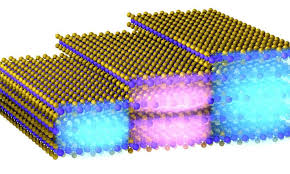Characteristics of flexible
( sTMD) multidimensional materials in nano dimensions (based on nano-microelectronics PhD)
Researcher and author: PhD student : Afshin Rashid
Note: Properties of flexible sTMD multidimensional materials in modern semiconductor nano dimensions have led to the development of a wide range of technologies such as electronics, lighting, solar energy and communications.
Most nano-metals and metal nano-alloys, semiconductors, ceramics and some nano-polymers with crystalline structure have a long-range order in their structure. The order of the order between atoms or ions is more than 100 nm. Atoms or ions are repeated in three dimensions on a regular basis. Long-range materials are called crystalline materials. If materials have a large crystal, they are called single crystal materials. Single crystal materials are suitable for many electronic and optical applications, for example computer chips are made of single crystal silicon. Polycrystalline materials are made up of very large small crystals in three dimensions. Monolayers are classified according to their stability in H or T structures, where H is the most common structure with TMD symmetry and trigonometric prism metal coordination, and T represents a multidimensional symmetry structure with octagonal metal coordination, and Structures are unstable.
In particular, single-layer TMDs are multidimensional nano-band semiconductors with direct slit semiconductors, while two-layer and thicker multilayers have indirect slit. For example, the sTMD flexible multidimensional material in the nanosized dimension is all directly traversed indirectly by crossing a layer by layer into a cross-layer. The electronic structure of flexible sTMD materials is dependent on the crystalline phase resulting in a wide range of electronic characters including metallic, semiconductor, semiconductor, and superconductors (SC) for various flexible sTMDs .
Conclusion :
The nano-microelectronics industry uses Si to fabricate electronic circuits and GaAs, GaN and other III-V materials for optical nano-devices, with conventional substrates consisting of wafers manufactured by flexible ( sTMD) multidimensional materials at high temperature nano dimensions . Precisely controlled thin films can be applied to the substrate for additional performance, for example by chemical vapor deposition (CVD) or molecular beam epitaxy.
Author: Engineer Afshin Rashid
PhD student of Nano-Microelectronics at Islamic Azad University, Science and Research Branch, Tehran




